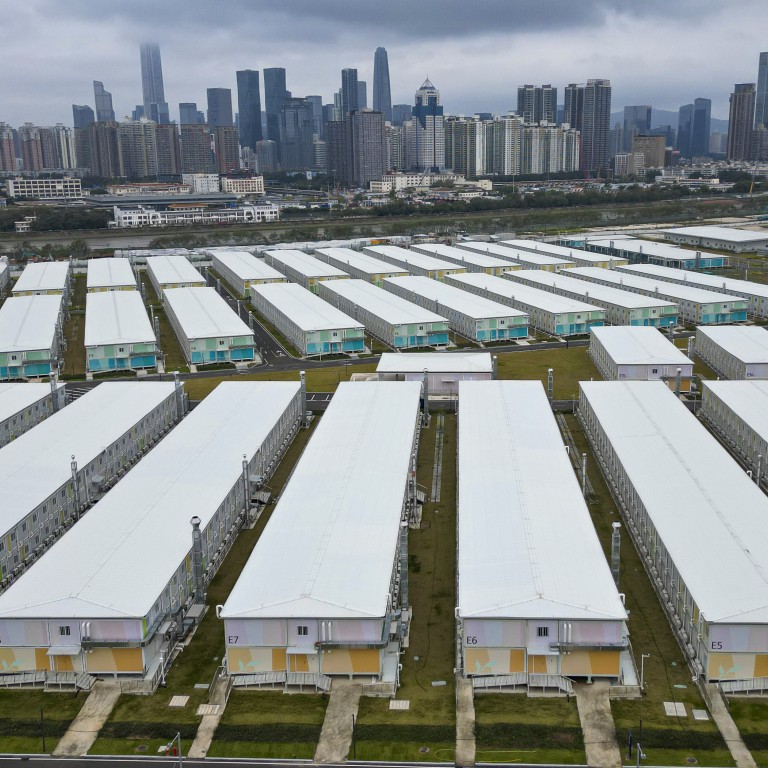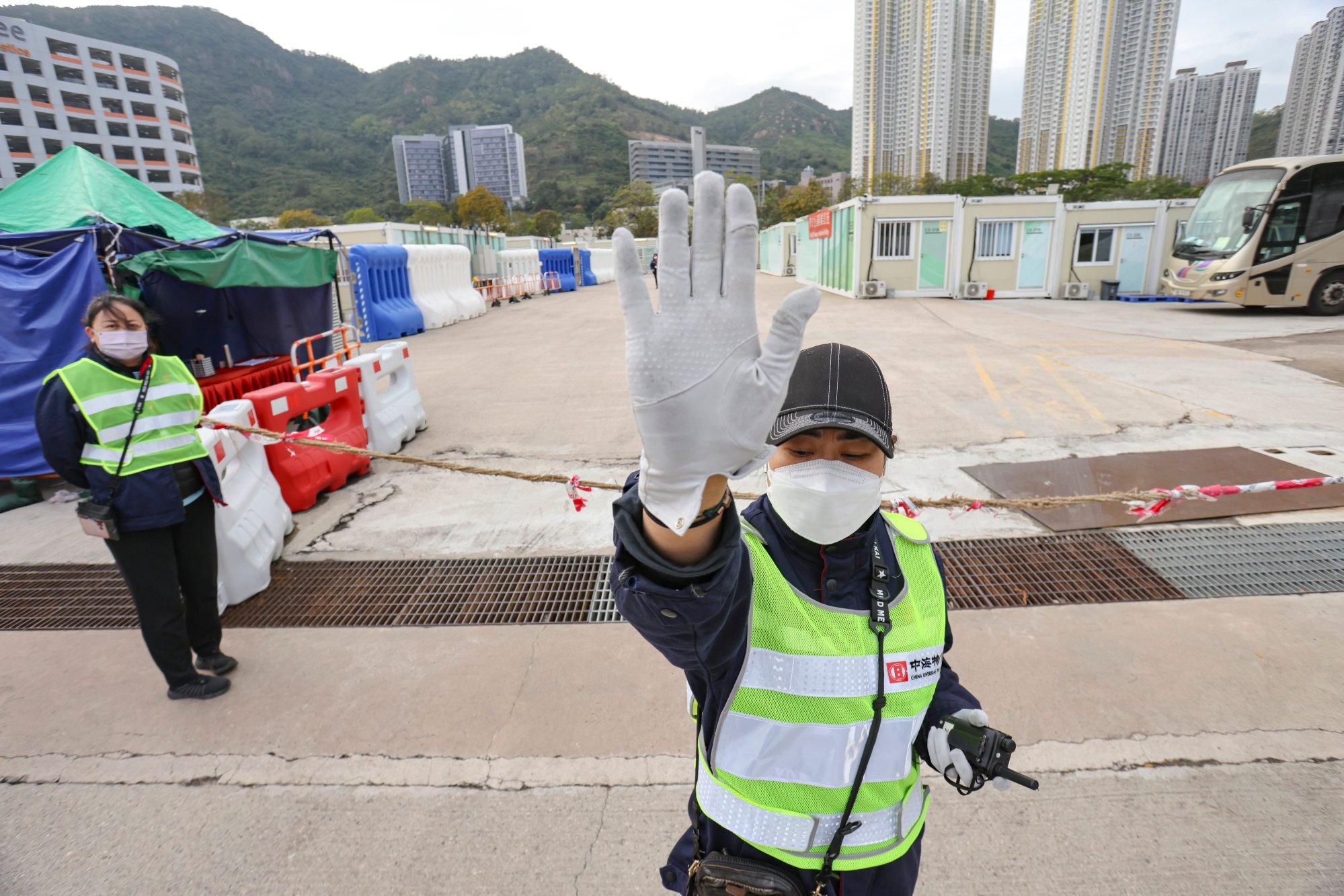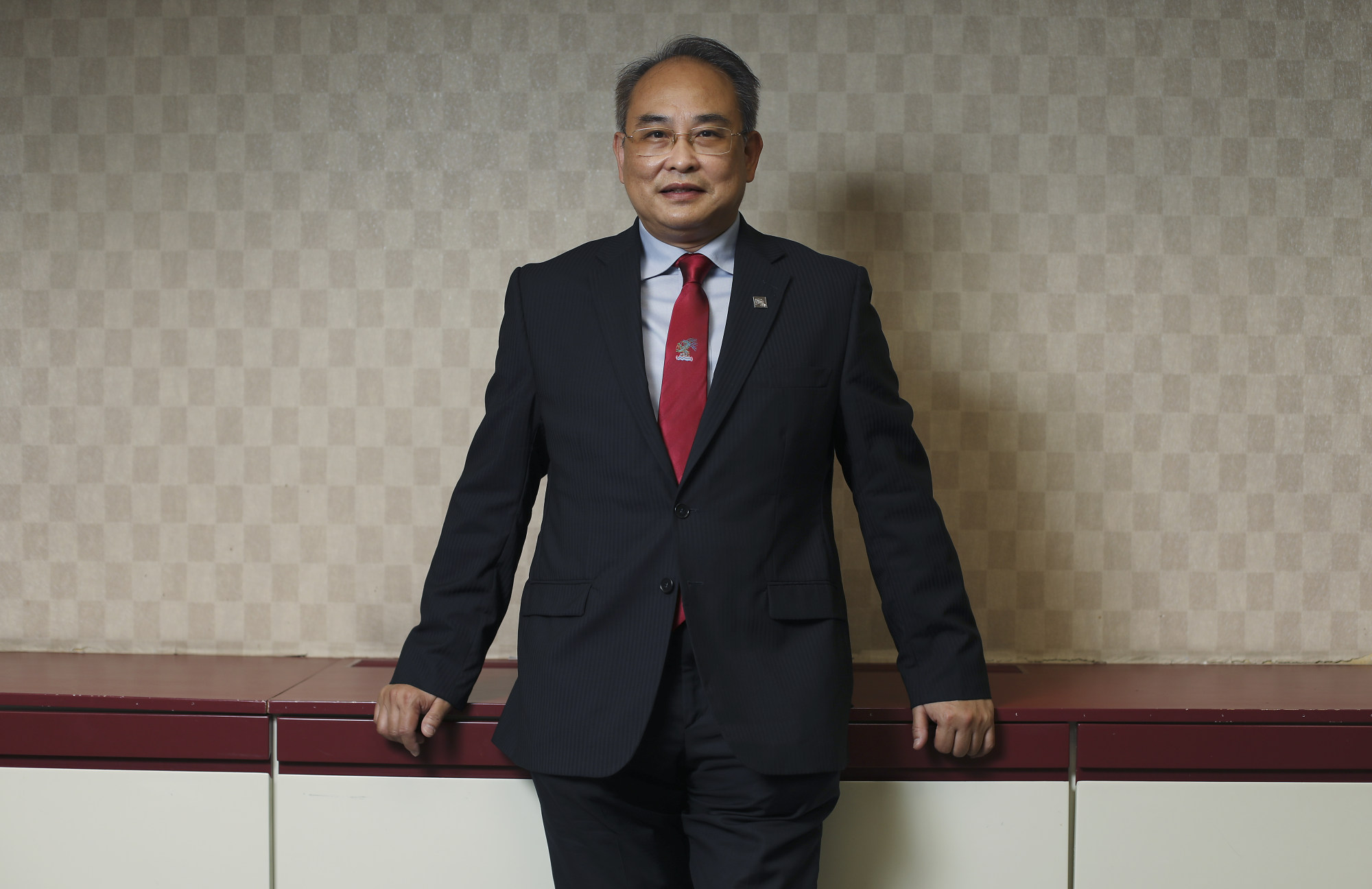
Covid white elephants? Hong Kong isolation facilities with 40,000 beds left empty as quarantine numbers dwindle
- City rushed to build quarantine facilities on sprawling sites, now only two out of nine are in use
- Idle facilities can be turned into homes, dormitories or healthcare training centres, some suggest
Seven Hong Kong quarantine facilities built in a rush by the government on sprawling sites and providing more than 40,000 beds are currently unoccupied, the Post has learned.
Only two facilities – at Kai Tak and Penny’s Bay – are still being used.
Lawmakers and healthcare sector stakeholders have urged the government to come up with alternative plans for the idle facilities which sit on over 72 hectares (177 acres), an area large enough for about 86 football fields.
In a city notorious for its housing shortage, some suggested turning them into flats, while others said they could be used as dormitories for workers or healthcare training centres, or even dismantled and repurposed.

The Health Bureau confirmed to the Post that only two of the nine isolation facilities were still in use. Together with the Novotel Citygate hotel in Tung Chung, they offer 10,000 units for Covid-19 patients unsuitable for home quarantine, with occupancy rates ranging from 40 to 80 per cent.
All the unused facilities are in the New Territories, at Tsing Yi, San Tin, the Hong Kong-Zhuhai-Macau Bridge, Ma Sik Road in Fanling, Hung Shui Kiu, Tam Mi and in Lok Ma Chau Loop. Occupying 72.5 hectares, they are on “standby mode”, said a spokeswoman for the Security Bureau which has been managing them.
The authorities would not confirm the number of beds or reveal the cost of building and maintaining the unused facilities, but a count by the Post found that more than 40,000 beds were left unoccupied and the costs were likely in the billions of Hong Kong dollars.
Lawmaker Dennis Leung Tsz-wing said he understood the facilities had been closed for more than half a year and about 5,400 workers, including security guards and cleaners, were laid off last May.
Last February, when Hong Kong was hit by its fifth and deadliest wave of Covid-19 infections, city authorities earmarked HK$12 billion (US$1.92 billion) to build new isolation facilities from scratch.
With help from mainland China, the government acquired 79 hectares in five days and assembled workers who worked 24/7 to produce prefabricated units and completed six of the facilities in just 32 days.
While officials praised the efficiency in building the facilities “to save lives”, there was little transparency about the cost and procedures.
China State Construction International Holdings was asked to build eight facilities without a bidding exercise. When asked how much the construction and maintenance cost, the Development Bureau said the expenditure had to be consolidated.

The largest idle site is at Lok Ma Chau Loop next to the border, with 11,000 beds in quarantine blocks and an emergency hospital sitting on 43.3 hectares. Unlike the other isolation facilities, it was built in two months by a mainland team commissioned by the central authorities.
Then city leader Carrie Lam Cheng Yuet-ngor sparked controversy by invoking an emergency law to build a bridge connecting the site to Shenzhen, saying it would speed up the transport of workers and materials.
Lawmaker Jesse Shang Hai-long, who obtained a police permit to visit the restricted area recently, said the bridge had been dismantled and the massive new facility was empty.
The Post learned that the temporary hospital was equipped with operating theatres and imaging facilities, just like Huoshenshan Hospital, the speciality field hospital built in Wuhan in only 10 days at the start of the pandemic.
“The fact that no one has been sent there is actually a blessing. It means the epidemic situation did not turn out as bad as expected,” Shang said. “But now it’s time to move on and use the giant site.”
Last month, Hong Kong authorities announced that the facility, on a site earmarked for an innovation and technology park, had been handed over to them by the central government, but did not indicate its future use.
Shang suggested, given its closeness to the mainland, that the centre should be turned into a dormitory for cross-border workers, including drivers, caretakers or construction workers.
Most of the isolation facilities sit on government sites, with three on private land owned by Sun Hung Kai Properties, Henderson Land Development and New World Development.
Chief Executive John Lee Ka-chiu last October dismissed the suggestion of converting the isolation facilities into transitional flats, saying it would not be “cost-effective” to refurbish them.
But Lo Wai-kwok, a lawmaker for the engineering constituency, argued that it would not take “a lot of investment” to turn some of them into liveable flats if the government had the determination to do so.
For example, he said, the 5,000 units at the Kai Tak facility all came with private bathrooms, and could be turned into homes for small families or single young people.
Lo said any kind of refurbishment would be cheaper than existing housing plans.
He referred to the newly-introduced “light public housing” scheme, in which each unit in low-rise buildings could cost HK$550,000 to build, as well as the Home and Youth Affairs Bureau’s project to subsidise non-governmental organisations in renting hotels to provide 3,000 hostel places for young people within five years.
“Refurbishing the Kai Tak site alone can supply the targeted number of flats for youth tenants,” he said.
Alex Lam Chi-yau, chairman of the concern group Hong Kong Patients’ Voices, suggested turning the idle quarantine facilities into community treatment centres for stable patients who need not remain in public hospitals.
Pointing out that the shortage of medical facilities would persist over the next two decades, he said: “Public hospitals have been pushed to the brink in nearly every peak of the flu season and after long public holidays. Covid-19 just worsened the overcrowding.”

Professor Yuen Pak-leung, former president of the Hong Kong Institution of Engineers, had more ideas for the unused facilities.
He suggested repurposing the prefabricated units by relocating them to construction sites of large infrastructure projects for use as offices or dormitories. They could also be donated to other countries.
The giant emergency hospital near the border could become a training centre for mainland medical personnel to get familiar with Hong Kong’s public healthcare system.
Yuen, a veteran hospital engineer, said the city should prepare for the next epidemic by improving facilities at hospitals and stadiums, including ventilation and passageways, so that they could be rapidly converted for quarantine purposes.
“Instead of building isolation units, it will be more flexible and sustainable to use existing facilities to gear up for the next battle,” he said.

